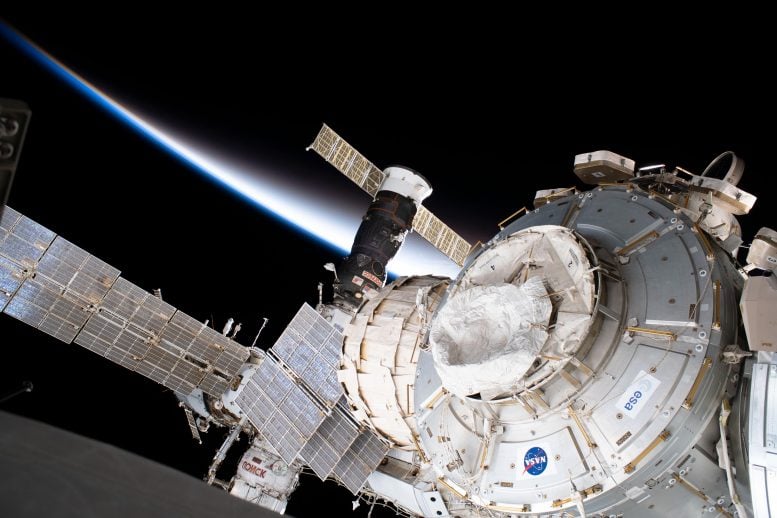
Portions of the International Space Station are pictured as the orbiting complex was flying into an orbital sunset. From front to back, are the Tranquility module, the Bigelow Expandable Activity Module (BEAM), the Progress 73 resupply ship and (at bottom) the Rassvet mini-research module. Credit: NASA
The International Space Station is a stepping stone for NASA’s Artemis program that will land the first woman and next man on the Moon by 2024. As the only place for conducting long-duration research on how living in microgravity affects living organisms, especially humans, as well as testing technologies to allow humans to work at the Moon, the space station serves as a unique asset in the effort establish a sustainable presence at the Moon. Missions to the Moon will include a combination of time aboard the Gateway, on the lunar surface, and in multiple spacecraft including Orion and the human landing system. The skills and technologies developed to explore the Moon will help build the capabilities needed for future missions to Mars. Here are some of the ways this orbiting laboratory is contributing to the path forward to the Moon and Mars.
The human element
Keeping crew members safe in space is a top priority of lunar missions, and it requires a broad understanding of how living in microgravity affects humans. The space station has offered close to two decades of human research opportunities in a way that no other platform has been able to accomplish. Here is some of what we’re learning:
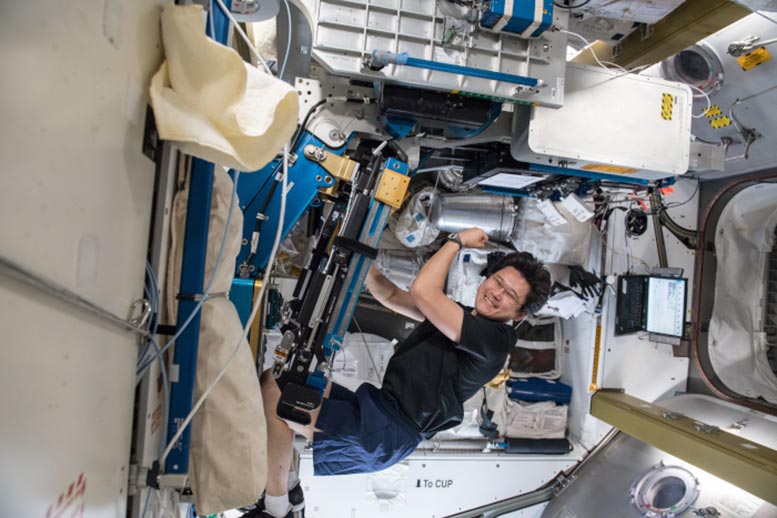
Japan Aerospace Exploration agency (JAXA) astronaut Norishige Kanai using the Advanced Resistive Exercise Device (ARED), which provides loading so that crew members experience load and maintain muscle strength and mass during long periods in space. Credit: JAXA
Bone and Muscle loss
In weightlessness, bones and muscles have less to do, and astronauts experience bone and muscle loss during extended stays in space. Researchers continue to investigate the underlying mechanisms and contributing factors to this loss. One investigation scans the hip bones of astronauts to assess the likelihood of bone fracture following exposure to microgravity. Other studies compare subjects on the ground to those aboard the station or in simulated conditions of spaceflight in ground-based laboratories. Researchers also have used the space station to understand how to use diet and exercise to counteract some of the negative effects of life in microgravity.
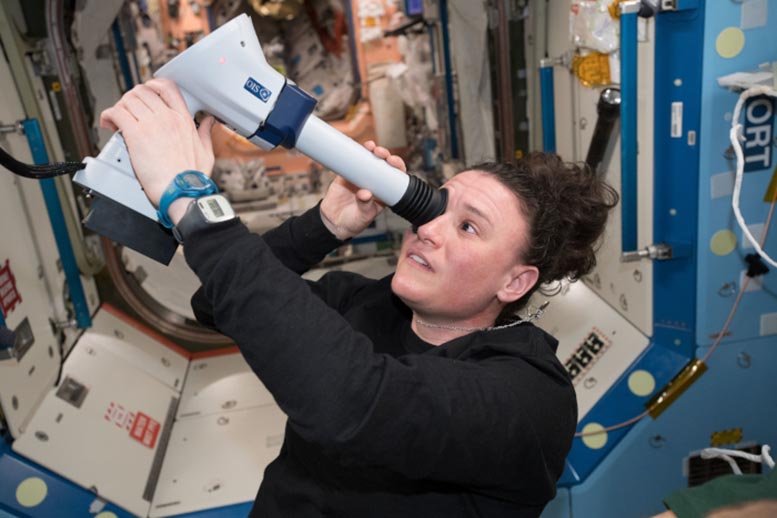
NASA astronaut Serena Auñón-Chancellor conducts an eye exam aboard the space station,
part of ongoing crew health maintenance activities. Credit: NASA
Vision
One of the most valuable tools an astronaut will have for gathering information during a Moon mission will be his or her own eyes. Long-duration spaceflight, though, often causes changes to a crew member’s vision. Scientists monitor spaceflight-induced visual impairment, as well as changes believed to arise from elevated pressure in the head, to characterize how living in microgravity affects the visual, vascular and central nervous systems. These studies could help develop measures to help prevent lasting changes in vision and eye damage.
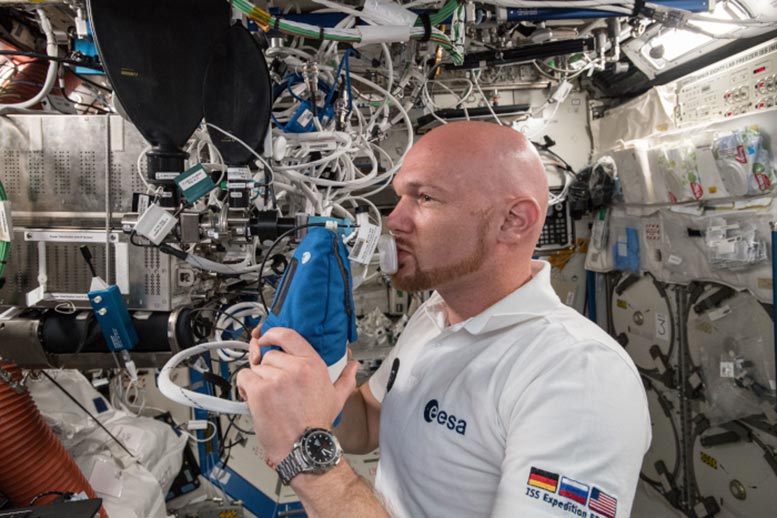
ESA (European Space Agency) astronaut Alexander Gerst exhales into an ultra-sensitive gas analyzer for the
Airway Monitoring experiment, a study of airway inflammation in crew members. Results help flight surgeons
plan safer long-term missions to the Moon and Mars and may help patients on Earth with asthma or other airway
inflammatory diseases. Credit: NASA
Health Monitoring
Missions to the Moon will prepare astronauts for missions to Mars, which will require greater self-sufficiency and independence from Earth, including monitoring health and wellness so that crew members can recognize and avoid risky health conditions on their own. For example, the Personal CO2 Monitor investigation attempted to demonstrate a system that can unobtrusively collect and monitor crew members’ exposure to carbon dioxide. Humans produce the gas naturally by breathing, but exposure to high concentrations can cause health issues. Wearable monitors can help the crew track their exposure to carbon dioxide and keep it within safe levels during long-duration stays in space. Similarly, research on airway inflammation in crew members seeks to help astronauts identify early signs of health conditions caused by free-floating dust and particles in the microgravity environment.
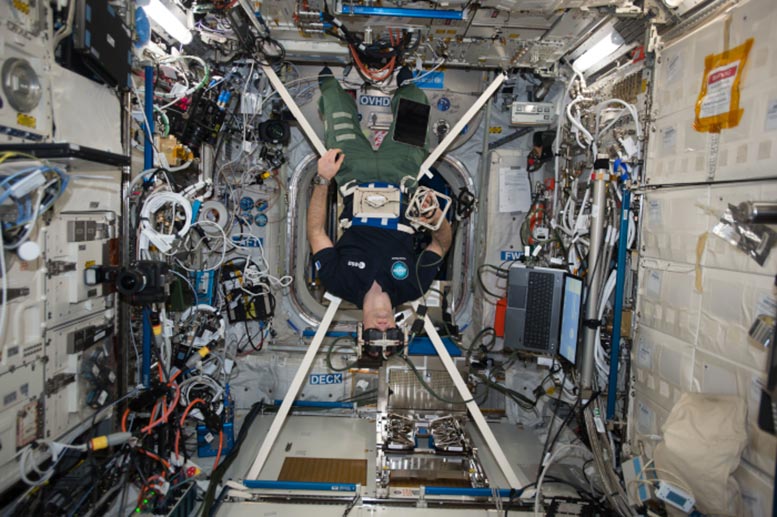
ESA astronaut Thomas Pesquet performing the Gravitational References for Sensimotor Performance (GRASP) experiment,
which looks at how the central nervous system integrates information from different sensations. This investigation provides further insight into how the brain adapts to the lack of traditional up and down in microgravity. Credit: NASA
Physical and mental function
Exposure to space flight changes many systems in the body in ways that could make it harder for crew members to perform critical mission tasks immediately after landing on a planetary surface. Crews traveling to the Moon or Mars will have little time to recover from these changes upon arrival and will lack access to Earth’s medical and rehabilitation facilities. One study identifies tasks that may be affected, and supports design of countermeasures to overcome any impairments. Another study validated a battery of tests for measuring cognitive performance in space. Other research looked at the complexity, severity and duration of physical changes in order to improve recovery time and prevent injury.
Technologies to support the mission to – and on – the Moon
In order to travel through space or set up sustainable bases on the Moon or other planetary bodies, crew members need technology and hardware that provide basic human needs, including oxygen and water, along with the ability to maintain and repair those systems. They also require the tools to conduct mission operations.
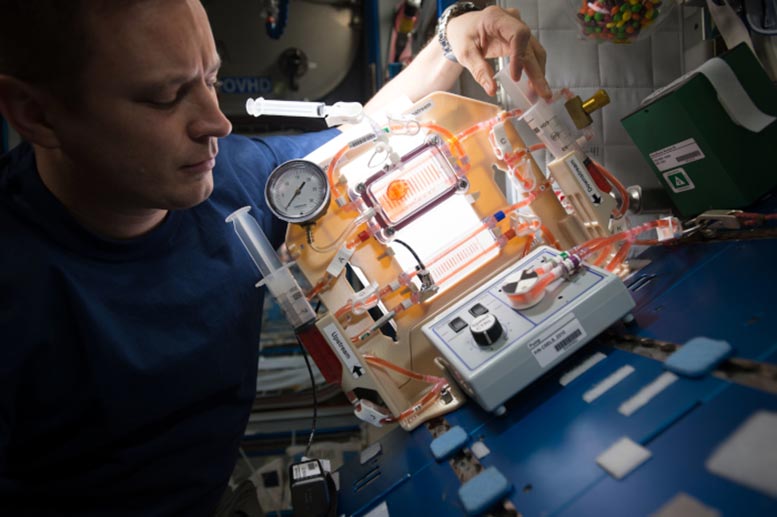
NASA astronaut Jack Fischer sets up hardware for the Capillary Structures investigation into ways to manage fluid and gas mixtures for water recycling and carbon dioxide removal. Results benefit design of lightweight, more reliable life support systems for future space missions. Credit: NASA
Life support systems
The space station has provided the impetus for development of state-of-the-art life support systems for space, and has served as a testbed for refining those systems. The Environmental Control and Life Support System (ECLSS) currently on station supplies oxygen, potable water, and appropriate cabin pressure and temperature and removes carbon dioxide, traces of gases, and particles. A set of hardware is used to monitor the station’s water supply and other hardware generates oxygen from recovered carbon dioxide. A recent project tested a new technology using evaporative cooling to maintain appropriate temperatures in spacesuits.
Waste management systems
Everyone “goes,” and space presents challenges for managing human waste. Decades of human occupation of the space station have contributed to improvements in design of toilets and waste management systems. The new Universal Waste Management System (UWMS) incorporates the best features from previous designs on the space shuttle and existing space station hardware with new technology to improve hygiene, crew comfort, and sustainability. It includes a double stall enclosure that provides privacy for a Toilet System and a Hygiene Compartment.
Fire safety
Understanding how fire spreads and behaves in space is crucial for the safety of astronauts, especially as humans travel farther from Earth. The Combustion Integrated Rack (CIR) and facilities such as the Microgravity Science Glovebox provide a secure and safe environment in which to study combustion aboard the space station. The CIR has supported a wide range of combustion and flame experiments. One major discovery resulting from this research came from an analysis of fire suppressants: researchers identified the existence of “cool flames” that apparently continue “burning” after flame extinction under certain conditions.
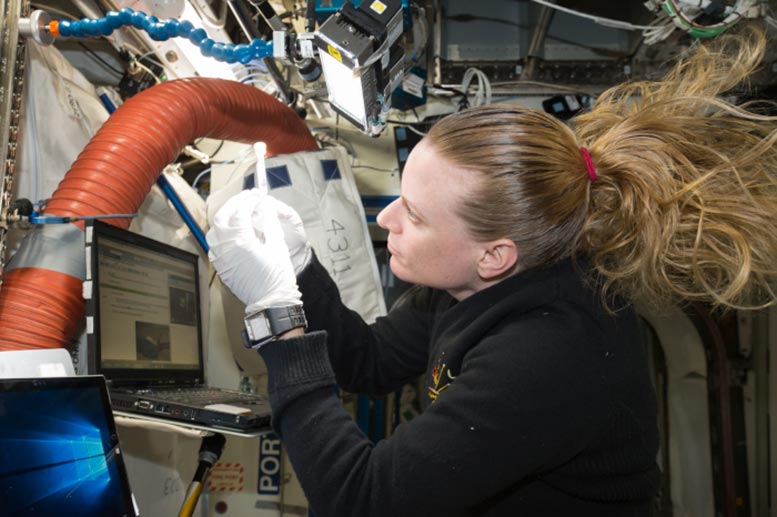
NASA Astronaut Kate Rubins prepares the Biomolecule Sequencer experiment, which first demonstrated DNA sequencing
in a spacecraft. Space-based DNA sequencing can identify microbes, diagnose diseases and monitor crew member health,
as well as potentially help detect DNA-based life elsewhere in the solar system. Credit: NASA
Operations in space
Astronauts have tested and used three-dimensional (3D) printers on the space station, advancing the ability to manufacture parts on-demand either aboard a spacecraft or on the surface of the Moon or Mars. Such manufacturing could even use recycled waste plastic materials to reduce the mass and number of tools or spare parts a crew would need to bring from Earth.
Thanks to other research, we can now perform DNA sequencing in space. This technology makes it possible to identify microbes and diagnose diseases to help maintain crew member health, as well as to potentially detect DNA-based life on the Moon, Mars or elsewhere in the solar system.
Space station research also has tested navigation techniques that use the Moon and stars. These techniques could serve as an emergency backup or confirm navigation information on future missions.
Large-scale international and commercial partnerships
The International Space Station represents the most politically complex space exploration program ever undertaken, involving the space agencies of the United States, Russia, Europe, Japan, and Canada. It brings together international flight crews; multiple launch vehicles; launch, operations, training, engineering, communications, and development facilities around the globe; and the international scientific research community.
In addition, space station research has evolved from relying almost solely on government funding and operations to involving a variety of commercial players. This commercialization drives future growth and innovation, including payload integration and the small satellite market.
The space station’s international and commercial partnerships provide valuable experience for achieving human presence on the Moon by 2024, part of Artemis. This larger, sustainable exploration campaign with international and commercial partners unifies nations, creates new economic opportunities and inspires future generations.




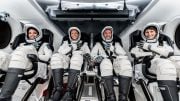
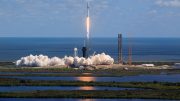
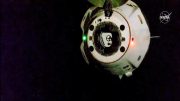
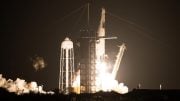
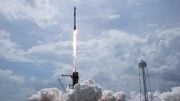
Be the first to comment on "The International Space Station Is Helping Us Get Back to the Moon – Here’s How"